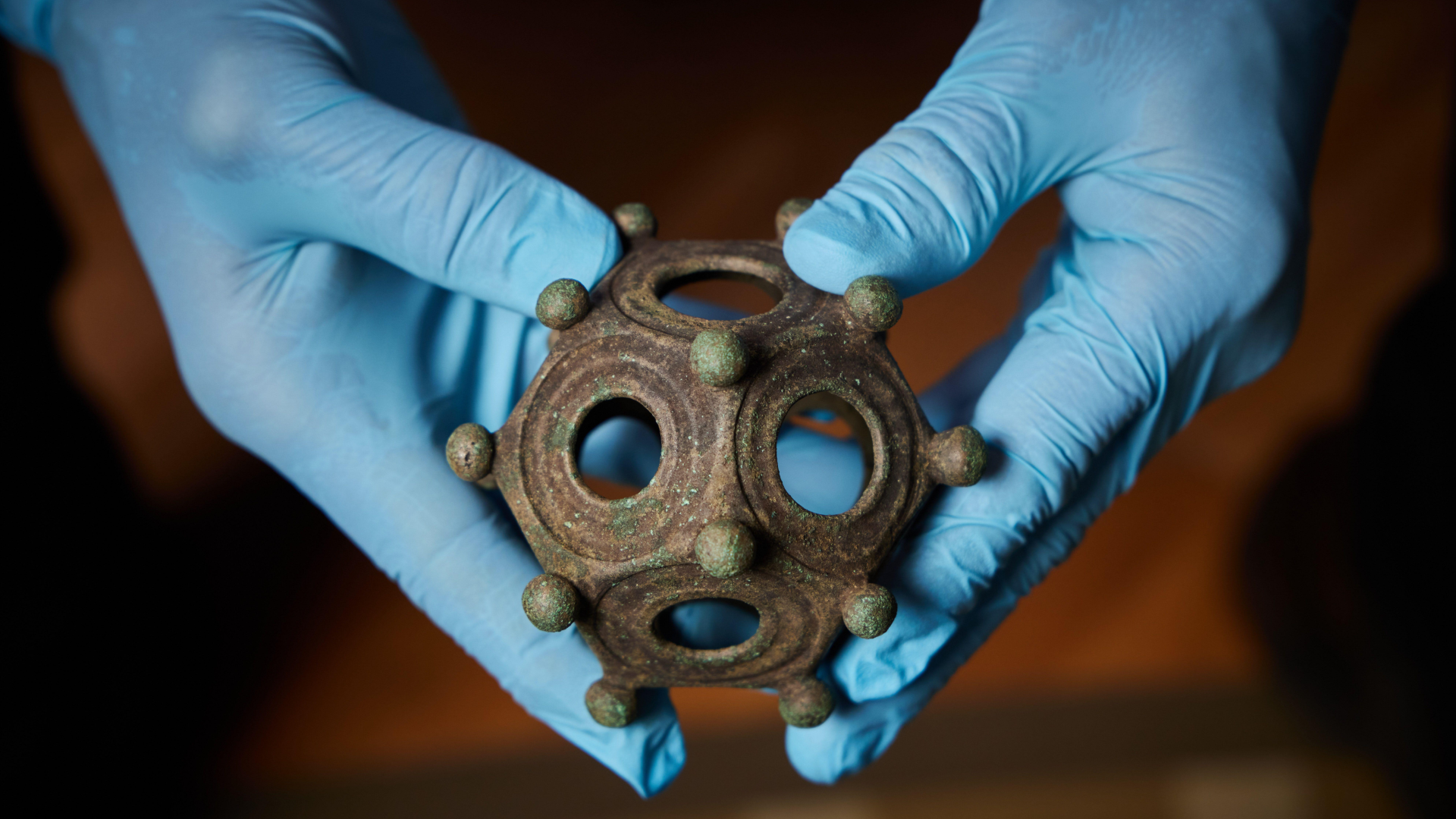Name: Roman dodecahedron
What it is: A 12-sided bronze object
Where it is from: Northwestern provinces of the Roman Empire
When it was made: Second to fourth centuries A.D.
Related: Penguin Vessel: 1,600-year-old Nazca depiction of a cold-water Humboldt penguin that lives in tropical Peru
What it tells us about the past:
Roman dodecahedrons have baffled archaeologists since 1739, when the first example of the 12-sided bronze object was discovered in the English Midlands. For nearly three centuries, experts and hobbyists have put forth dozens of theories as to why people treasured these items — but their purpose has never been confirmed.
At least 120 examples of dodecahedrons have been discovered across the northwestern provinces of the Roman Empire. All date to the late second to late fourth centuries, and their general appearance is the same, according to classical archaeologist Michael Guggenberger, who has published several studies on the objects.
In a 2000 study, Guggenberger wrote that the basic shape is a regular or pentagonal dodecahedron: 12 pentagons form the faces of the hollow shape, and they meet at 20 corners. Each corner of a Roman dodecahedron is topped with a small sphere, and each pentagonal face has a hole of varying diameter. The dodecahedrons range from 1.6 to 3.9 inches (4 to 10 centimeters) tall and weigh 1 to 20 ounces (30 to 580 grams), with exceptionally thin walls. No writing has been found on any dodecahedron.
Because these dodecahedrons have been found in Austria, Belgium, France, Germany, Great Britain, Hungary, Luxembourg, the Netherlands and Switzerland — but not in Italy — Guggenberger views them as “Gallo-Roman products” with a possible origin in the Celtic tribes of the Roman Empire. But there are no historical records or depictions of them in ancient art, so the origin and purpose of the dodecahedrons have been lost.
Archaeologists have recovered dodecahedrons from the graves of men and women, in coin hoards and even in refuse heaps, so a blanket explanation for their use has not been found. But many researchers have attempted to solve the puzzle, suggesting that dodecahedrons may have been used as weapons, decorations, candlestick holders, range finders, measurement devices, children’s toys, dice, craftsman’s samples or spools for knitting gloves.
Of the 50 or more theories, Guggenberger wrote, most can now be ruled out or considered highly improbable. The primary explanation he favors is symbolic, with a connection to the philosophy of ancient Greek thinkers Plato and Pythagoras.
In Platonic-Pythagorean symbolism, four solid shapes were associated with four elements — tetrahedrons with fire, octahedrons with air, icosahedrons with water, and hexahedrons with earth. And, as the fifth regular solid, “the dodecahedron served as an all-encompassing symbol representing the universe,” Guggenberger wrote in a 2013 study.
In the second century A.D., thinkers like Plutarch resurrected the earlier idea of the dodecahedron as a symbolic connection to the heavens and the universe, Guggenberger wrote, and that may have influenced Celtic peoples in the Roman Empire.
MORE ASTONISHING ARTIFACTS
But one particular grave with a dodecahedron may hold a key clue to its use, Guggenberger noted in the 2000 study. Discovered in a woman’s grave in Germany in 1966, the Gellep dodecahedron was located directly next to a rod-shaped bone artifact, suggesting it may have been a staff for mounting the mysterious object to create a symbolic scepter. And given the Celtic background for the object, this may link it to Druidic traditions.
“For the time being, the most likely interpretation of the dodecahedron is as a cosmic, all-encompassing symbol,” Guggenberger wrote, with “a function comparable to an amulet.”
